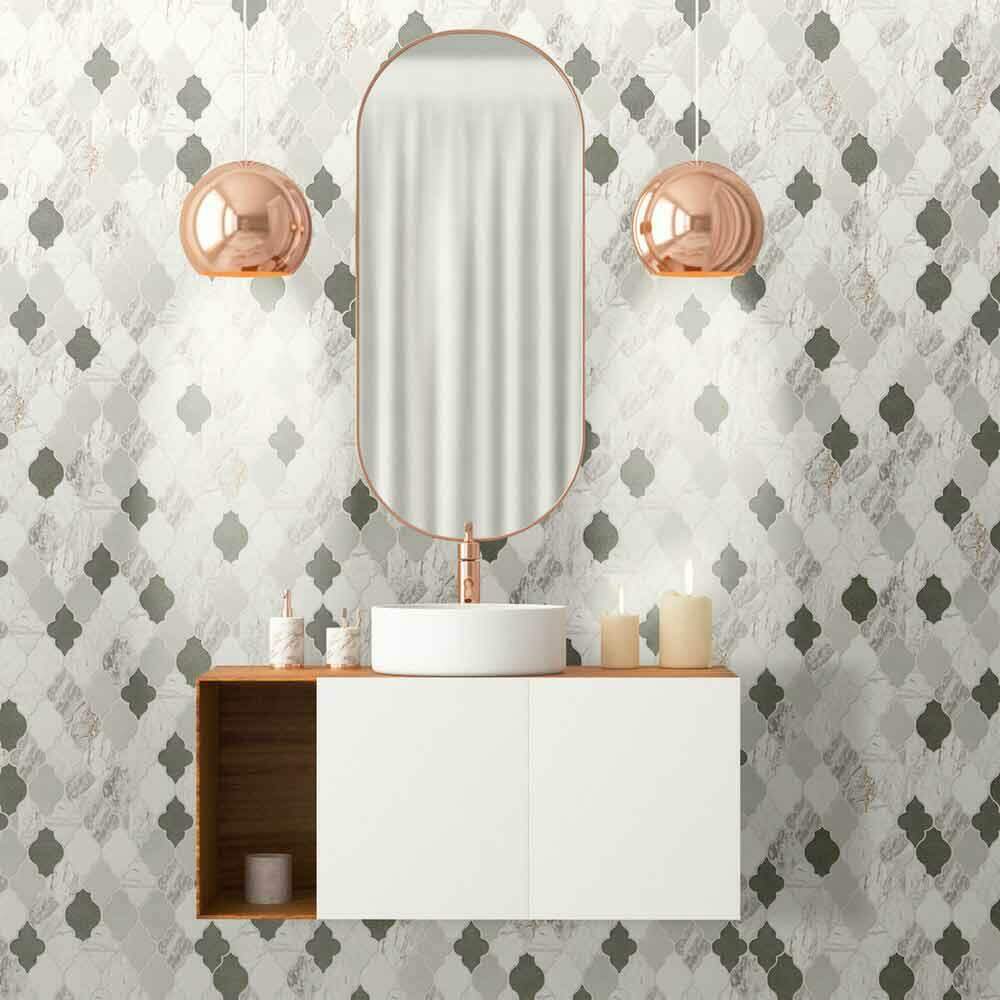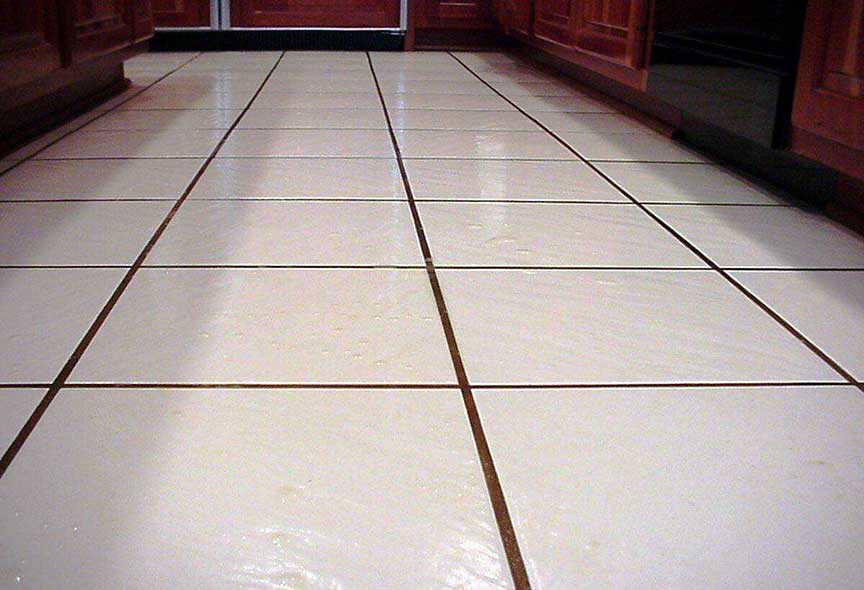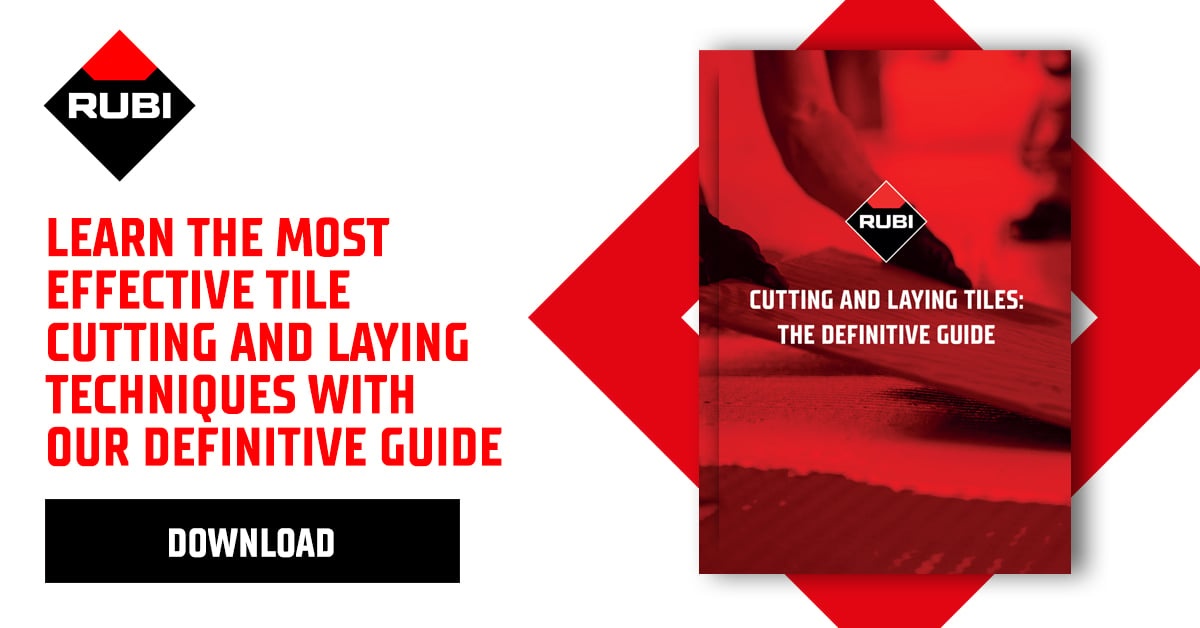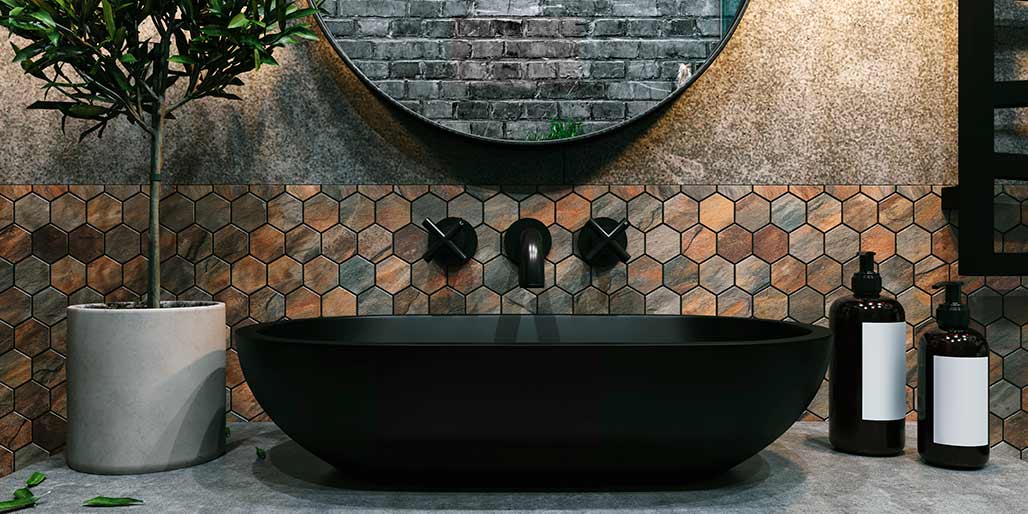Tiles are more than just practical for floor or wall tile installations. They’re a powerful design tool that can transform your space. The types of tile patterns you choose can make a room feel larger, cozier, or more elegant. It can draw the eye to a specific area or create a sense of flow throughout your home. From classic grid layouts to intricate mosaics, tile patterns offer endless possibilities for creativity. In this article, we’ll explore different types of tile patterns and how they can enhance your living spaces. After reading, you’ll have the knowledge you need to confidently choose tile patterns that reflect your style and meet your needs.

Modular and Mosaic Tile Patterns
When you’re ready to get more creative with your tiles, modular and mosaic tile patterns offer exciting options. These designs let you play with shapes and sizes to make truly unique spaces.
Modular tile patterns mix tiles of different sizes and shapes. Imagine putting together a puzzle where the pieces aren’t all the same. You might use big squares, small rectangles, and even octagons in one design.
The Roman pattern, for example, uses four different tile sizes to create a repeating pattern that looks organized but interesting. The Versailles pattern is another popular choice, using five tile sizes for a more complex look.
Mosaic tile patterns take creativity to a whole new level. You use tiny tiles, often just an inch or smaller, to make detailed pictures or designs. It’s like painting but with tiles instead of brushes.
You can create anything from simple geometric shapes to intricate scenes. Mosaics work great for making a splash behind your kitchen sink or adding a pop of color to your shower wall.

Large Format And Mixed Material Tile Patterns
If you want to make your space look modern and sleek, large format tile patterns might be just what you need. These are big tiles, often 24 inches by 24 inches or even larger. They’re becoming more popular because they can make a room look bigger and more open.
When you use large format tiles, you have fewer grout lines. This gives your floor or walls a smooth, seamless look. You can lay these tiles in different ways. An offset pattern can make your room look longer, while a grid pattern can make it feel more organized.
Mixed material patterns are another cool trend. This is when you use different types of tiles together in one design. You might mix porcelain tiles with natural stone or add some glass tiles for sparkle. This mix can add depth and texture to your space, making it more interesting to look at.
For example, you could use large porcelain tiles for most of your floor, but add a border of small glass tiles. Or you might create a pattern on your wall using both smooth and textured tiles.
When you’re planning to use large format or mixed material patterns, it’s important to be careful. These designs can look amazing, but they need precise planning and installation. Measure your space carefully and think about how the pattern will look from different angles. It’s often a good idea to get help from a professional to make sure everything fits perfectly.

Grout Color Selection
White grout with white tiles is a classic choice. It gives your space a clean, bright look. Everything blends together, making the room feel bigger and more open. But keep in mind white grout can be hard to keep clean. You’ll need to scrub it more often to keep it looking nice.
If you want something more modern, try dark grout with white tiles. Black, charcoal, or dark gray grout can make your tile pattern really stand out. It’s great for industrial or contemporary styles. Plus, dark grout is easier to keep looking clean because it hides dirt better.
Gray grout is a good middle ground. It goes well with white tiles and still looks clean and stylish. Light or medium gray grout is better at hiding stains than white, but it’s not as bold as dark grout.
For a fun twist, you could use colorful grout. Blue, green, or even metallic colors can add a playful touch to your tiles. Imagine blue grout with white tiles in a beach-themed bathroom, or gold grout for a glam look in your kitchen.
When you’re choosing a grout color, think about the whole room. Make sure it fits with your other colors and decorations.

Pattern Planning Tips
When you’re planning your tile pattern, it’s important to consider a few key things. Your room’s size and shape play a big role in choosing the right design. Bigger rooms can handle bolder patterns, while smaller spaces often look better with simpler ones. You want your pattern to make the room feel just right, not cramped or overwhelming.
Your personal style matters too. If you love modern looks, you might prefer clean lines and large tiles. But if you’re into classic designs, traditional patterns like herringbone or basketweave could be perfect for you. It’s all about finding a pattern that fits your taste and the overall feel of your home.
Don’t forget to think about how your tile pattern will work with the rest of your room. If you have lots of decorations or busy wallpaper, a simpler tile design might be best. On the other hand, if your room is pretty plain, an interesting tile pattern can really make it stand out.
Lastly, consider how you’ll use grout to enhance your pattern. The right grout color can make your tiles pop and show off your chosen design even more. With some careful planning, you’ll create a tile pattern that transforms your space into something truly special.
Explore More Types of Tile Patterns and Ideas
By exploring different types of tile patterns, you can create stunning interiors that reflect your personal style. Remember, the key to success lies in careful planning and choosing the right tools for the job.
Rubi Tools offers a comprehensive range of high-quality equipment designed specifically for tile installation. Our products can help you achieve professional results, whether you’re working with ceramic, porcelain, or natural stone tiles.
Ready to start your tiling project? Take a tour of our site and explore our range of professional-grade tools and educational blogs for expert tips and tricks.



Post a comment